#brauronia
Explore tagged Tumblr posts
Text
The Sanctuary of Artemis Brauronia (Brauronion)




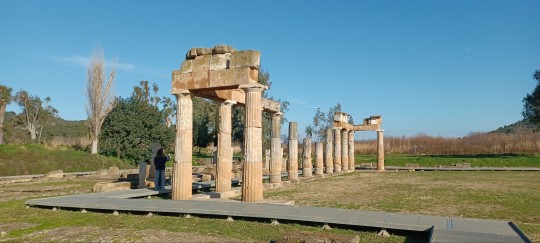

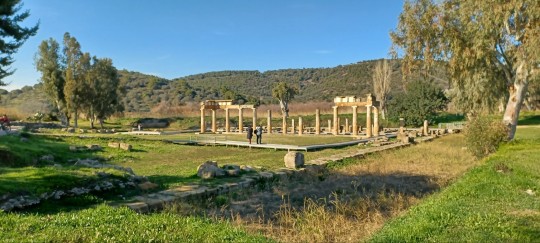
Artemis Brauronia, protector of women in pregnancy and childbirth, had her main sanctuary at Brauron, a demos on the east coast of Attica.
(Please do not use photos without permission)
#Artemis#brauronia#Epithets#Temples#My posts#My pics#I want to go back to Greece#I need to upload more of my photos from my trip#god#I want to go back
216 notes
·
View notes
Text
Not going to lie, a bunch of little girls dressed up playing and pretending to be bears to honor Artemis just sounds adorable as can be. 🐻
81 notes
·
View notes
Text
Mounykhia
~ 16 Mounykhion ~
The festival of the month's name, Mounykhia celebrates Artemis of Mounykhia (a steep hill near the Athenian port of Peiraios) This festival rose to popularity when Peiraios became an established naval base port as Artemis had a sanctuary up on the mountain slope.

Two aspects of Artemis were celebrated this day; Artemis of the Beasts and Artemis of the Moon. For the Beasts, traditionally, a she-goat was sacrificed in honor of the man who refused to sacrifice his daughter. An Oracle had declared a sacrifice of a young girl so the Goddess would forgive the people for slaying a she-bear who entered her shrine. The man agreed and instead sacrificed a she-goat. He was prized the honor of being a priest of Artemis.
The second aspect was a libation at moonlight in honor of Her Moon epithet. Amphiphontes were offered as well, a small round cake with candles lit in a circle upon it. However, the name of the cake doubles as the meaning "Shining by double light" suggesting the offering might have taken place at dusk with the sun and moon both out in honor for both of Artemis' epithets.

Similarly to Delphinia, this festival had taken place at the port of Peiraios, ending in water races. Different than the previous festival, Artemis of the Beasts had been celebrated nearer to the coast of Athens at Brauronia. This might have been related to a different festival celebrated in Brauronia where young girls seen a the she-bears dressed in saffron chitons and danced with crowns and torches/twigs.

Though in ancient times a she-goat was sacrificed modern Hellenes might offer Amphiphontes and palm leaves as the palm is sacred to Artemis, pour libation at dusk, and observe full moon rituals to the Goddess as the festival took place on the full moon.
Traditional Offerings:
Amphiphontes with daida (candles in a circle)
Palm leaves
Pictures of Artemis
Moon water
Incense of Artemis' favorite scents
Libations
Traditional Acts:
Offerings and libations
Dancing
Racing in water
Observing the full moon
Khaire Artemis! 🌘🏹🦌
#hellenic polytheism#hellenic witch#hellenism#hellenic deities#hellenic polytheistic#hellenic worship#hellenistic#theoi#helpol#artemis deity#artemis#artemis festival#lady artemis#mounykhia
25 notes
·
View notes
Text
The farther back we go in our search for the origins and meaning of the Moon Goddess the nearer do we come to the animal concept. Hecate was once, in the dim past, the three-headed Hound of the Moon; Artemis was a Bear; Isis was Hathor the Cow Goddess; Cybele was once a Lioness or a lion-headed goddess. She sits on a lion throne and rides in a chariot drawn by lions; and Atargatis, Queen of Heaven, is shown riding a lion, her head surrounded by rays. In the later centuries of the Egyptian worship of Osiris it was said that Apis, the Bull, was the spirit of Osiris. This saying gives a direct clue to the evolution of the religious thought.
First the moon deity was an animal, then the spirit of the god is an animal. Later the god or goddess is attended by animals. Later still these animal attendants were replaced by human beings who wore animal masks, performed animal dances, and were called by animal names. We are told, for instance, that little Athenian girls danced as bears to Artemis of Brauronia, the Bear-Goddess, while Bear-men attended the Celtic moon goddess, who was once manifested in bear form.
The bear, indeed, represents the fierce and terrible aspect of the Goddess herself, which not only creates but also destroys life. Later the two aspects of the Goddess become partially differentiated and separated, so that in the famous sculpture of "The Mourning Aphrodite of Lebanon," the animal, in this case a boar instead of a bear, is killing the youthful Adonis, while Aphrodite laments in deepest grief. Yet the boar is also Aphrodite, herself.
The animal attendants and animal emblems surrounding the goddess in her shrines must have constantly reminded the worshippers of later days, of those wilder aspects of her nature from which she had in part evolved. Her animals she still kept near her, for she could not be comprehended except in the light of her past.
The psychological meaning of this gradual change in form is clear. In extremely early days, before civilization had progressed very far, feminine instinct was perceived as entirely animal. Then the fierceness of the mother's care for her young and the voracity of her lust for the male in the mating season were the most obvious and dominant characteristics of beast and woman alike. As civilization progressed, however, women began to develop something nearer akin to the emotion which we call love, and the goddess of women rose gradually above her animal nature. She was represented now as woman but with the fierceness of her feminine instinct not far away. She rides her lion, gives birth to her animals, wears her headdress of cow horns and is attended by her beasts, while she herself transcends in some measure the fierce animal passions which these things represent.
This situation is not far removed from the condition of our own civilization today. Our women have learned human manners and emotions—pity, consideration, love; but not far beneath the surface, slumbering in unconsciousness, the old primitive form of feminine instinct lurks, ready to spring up again and perhaps even to reassert its power over consciousness in any really critical situation.
-M. Esther Harding, Woman’s Mysteries: Ancient and Modern
26 notes
·
View notes
Text
Artemis + Human Sacrifice, Blood, and Bulls
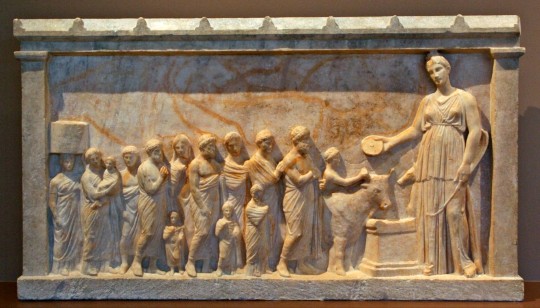
"The cult of Artemis Brauronia had two sanctuaries: one at the ancient site of Brauron (from which the goddess derives her name), and the other in the heart of Athens on the Acropolis...a procession was held every four years — from the Temple of Artemis Brauronia on the Athenian Acropolis to Brauron — in honour of the goddess and her priestess Iphigenia.
Initially, it is easy to identify one aspect of Artemis’ duality here when considering that this procession encompasses two different urban spaces, the city and the village. In addition to this, the rituals that took place at Brauron provide us with a much more complex identity for Artemis.
Artemis of Brauron, also known as the Taurian Artemis, is mystical, and her worship was orgiastic and connected, at least in early times, with human sacrifice. According to Greek legend, there was in Tauris a goddess, whom the Greeks identified with their own Artemis, to whom all strangers that were thrown off the coast of Tauris were sacrificed (Euripides, Iphigenia in Tauris 36).
The Brauronian Artemis was also worshipped in Sparta as Artemis Orthia, goddess of the steep, or “she who stands erect.” The latter, sometimes understood as a phallic symbol, may correlate with the fact that only boys participated in this ritual. Her image is said to have been brought over, or stolen, from Brauron and consequently drove men mad.

Tradition states that some quarrel or competition among the earliest tribes of Sparta led to violence and death around the altar of Artemis. After the slaughter there was a plague, and the Oracle prescribed that the altar be soaked in blood. The citizens selected an individual by lot who would be the human sacrifice (Herodotus, Histories 1.65).
This original tradition was eventually considered barbaric, and the ritual was adapted by the legendary lawgiver Lycurgus so that boys were scourged at her altar in such a manner that it became sprinkled with their blood.
This cruel ceremony was believed to have been introduced in the place of human sacrifices,and according to Redfield, it was not boys who were scourged but warriors, and instead of one of them dying they could all bleed together.
This is a very Spartan ritual in that it involves physical sacrifice in the sacred place of the divine. More interestingly, the ritual of the community is inscribed on the body of its citizens and denies differences, both natural and cultural, so that all men are treated equally.
Since this is clearly an initiation rite, we can see that Artemis is present in the transformation from child to adult of not just women but men too. This is further evidenced when we look at the tradition of the Taurian Artemis.

Orestes is said to have continued on from Brauron and established the cult of Artemis Tauropolos. A kindred divinity, if not the same as the Taurian Artemis, her worship was connected with bloody sacrifices, and she is said to have produced madness in the minds of men if they looked upon her statue (Sophocles, Ajax 172). Artemis was able to cure this madness in her role as “Healer,” but she did this sparingly and only for those she deemed worthy of her gift.
According to Sophocles, Artemis Tauropolos was originally a designation of an ancient Taurian goddess who oversaw male rites of passage. The name Tauropolos has been explained in different ways, some supposing that it means the goddess worshipped in Tauris, who protects the country of Tauris, and to whom bulls are sacrificed (Sophocles, Ajax 172), while others explain it to mean the goddess riding on bulls, drawn by bulls, or killing bulls (Euripides, Iphigenia in Tauris 1457).
The bull is mostly referred to by classics scholars as an ancient and proliferous symbol of masculinity. It is thus intriguing that Artemis is associated with this symbol, though not altogether surprising when we consider her duality as a goddess of bloodshed and retribution, often viewed as Greek male characteristics, as well as mercy and healing, often viewed as Greek female responsibilities.
This shows the complexity of cultic practice, which places Artemis in the position of presiding divinity in the early lives of Greek boys and girls."
She Who Hunts: Artemis: The Goddess Who Changed the World by Carla Ionescu
(Photo credits: Archaeological Site of Brauron from the sanctuary of Artemis)
#tw: violence#artemis#Carla Ionescu#artemis worship#artemis devotion#artemis devotee#artemis deity#artemis goddess#goddess artemis#diana#diana goddess#helpol#hellenic polytheism#hellenic pantheon#hellenic gods#hellenic community#hellenic pagan#hellenic paganism#hellenic polytheist#hellenic worship
16 notes
·
View notes
Text
Not to make a rare personal post or anything but last month was the Brauronia and Mounikhia, so I made a little bear sculpture for Artemis then got very busy and didn't paint it. But I'm painting it now!
He's not perfect, an ear fell off while he was drying and he's go cracks all over also the eyes are wonky but I don't do stuff like this often so I'm very happy with him. I also forgot to make him a tail.

6 notes
·
View notes
Text
NOME: Santuario di Artemide Brauronia
Il santuario sull'Acropoli era di insolita forma trapezoidale e non conteneva un tempio formale: la sua funzione era assolta da un portico o stoà. La stoà misurava circa 38 per 6,8 metri; si ergeva davanti alla parete sud dell'Acropoli, affacciata a nord. Agli angoli vi erano due ali laterali come avancorpi, ciascuna di circa 9,3 m di lunghezza, quella occidentale rivolta verso est e viceversa. A nord dell'ala orientale c'era un'altra corta stoà rivolta a occidente. Tutta la parte occidentale del santuario, oggi perduto, sorgeva sui resti del muro di fortificazione miceneo. Tutto ciò che rimane del paramento orientale sono fondazioni di pareti scavate nella roccia così come pochissimi elementi architettonici in calcare.


0 notes
Photo
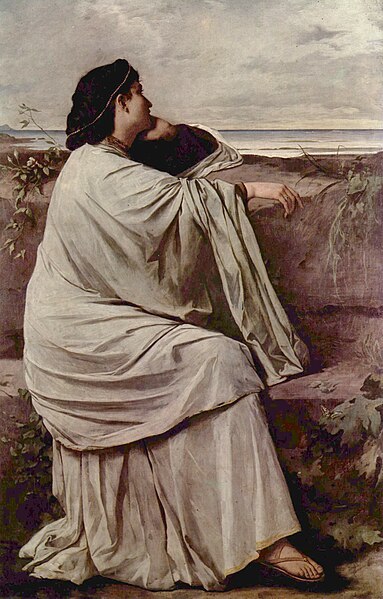
En la mitología griega, Ifigenia (en griego Ίφιγένεια Iphigeneia, ‘mujer de raza fuerte’) era hija del rey Agamenón y la reina Clitemnestra (a veces se la considera hija de Teseo y Helena criada por Agamenón y Clitemnestra), fue pedida en sacrificio a Agamenón para continuar su navegación a Troya.
Ifigenia depositó la imagen en el templo de Artemisa en Braurón, Ática, donde permaneció como sacerdotisa de Artemisa Brauronia.
Ifigenia y Orestes no se reconocen (Ifigenia cree que su hermano está muerto, un punto clave). Ifigenia se entera por Orestes, que todavía oculta su identidad, que Orestes está vivo.
Ifigenia ya está en el altar. Pero entonces sabemos que, súbitamente inspirado por los dioses, Calcas proclama que la víctima destinada al sacrificio es de hecho Erifila, hija secreta de Helena.
0 notes
Photo

Temple of Artemis Brauronia
The temple of Artemis Brauronia is located in the ancient Greek city of Brauronia.
Read more at: https://paganplaces.com/places/temple-of-artemis-brauronia/
0 notes
Text
Just signed up for an online course on Ancient Greek and Roman archeology!
#aahh#I have to hand in an assignment about an archeological site of my choice#@the temple of Artemis Brauronia: there I go!!#the course is organized by Udima (Spain)#personal
1 note
·
View note
Text
Artemis Deity Guide
The Romans knew her as Diana, she is the goddess of the Moon, the hunt, the wildlife, as well as mothers and maidens.

Who is Artemis?
Most associated with the moon and wildlife, Artemis is also known to be a goddess who reigns over childbirth, as she helped deliver her own brother soon after she herself was born. She lends a hand in the cycles of nature and the wild creatures within it.
Unlike her more extroverted brother, Artemis prefers wildlife and nature rather than hanging out with other deities. That being said, she seems to have a soft spot for humans.
She is a virgin goddess, sworn to chastity of her own will.
Parents and Siblings
Zeus is her father, her mother is Leto
Apollo is her only full sibling.
Ares
Dionysus
Hermes
Hephaestus
Heracles
Minos
Perseus
Rhadamanthus
Athena
Persephone
Eileithyia
Hebe
Eris
Helen of Troy
The Graces
The Muses
Moirae
Lovers or Partners
Orion, though not all myths agree that they were romantic partners, some believe that they were hunting partners or close friends.
Children
None
Epithets
Diana
Phoebe
Selene, the personification of the Moon, is different than Artemis but her name still became an epithet during the Hellenistic period.
Artemis Orthia
Agrotera (“she of the hunt”)
Keladeinē (“strong-voiced”)
Parthenos (“virgin”)
These included Hekatēbolos and Hekatē (“far-shooter”)
Hekaergē (“far-worker”)
Iocheaira (“she of the showering arrows”)
Delia, referring to the island where her and her brother were born
Sōteira (“savior”)
Phōsphoros (“bringer of light”)
Eileithyia (in her capacity as a goddess of childbirth)
undefined
Artemis Daphnaia
Festivals/Holy Days
Elaphebolia
Charisteria/Kharisteria
The Munichia
The Brauronia
The Laphria
Thargelia.) Her birthday, the sixth day of the Greek month Thargelion, which would be May 24th in the Gregorian calender. (Apollos is the day after hers)
Artemisia
Notes
Artemis also held domain over initiation rites for everyone--male and female historically, though with progressive society, I mean "everyone" as in everyone. All genders included--when entering new life phases; i.e. child to adult, virgin to spouse, spouse to parent, and so on.
From literature we know that the twins didn’t immediately start out as deities of the moon and sun respectively.
Eileithyia and Hecate were mistakenly identified with Artemis and thus their names were occasionally epithets of the Goddess.
Modern Deity Work
Correspondences
Disclaimer - Not all of these are traditional or historic correspondences nor do they need to be. However, any correspondence that can be considered traditional will be marked with a (T).
Rocks/Stone/Crystals
Moonstone
Pearl
Silver
Clear quartz
Amethyst
Selenite
Opal
Herbs/Plants
Cypress (T)
Laurel (T)
Palm tree (T)
Mugwort or any other plants in the Artemisia family!
Amaranth
Lilies
Chamomile
Wildflowers
Animals
Boar (T)
Deer (Doe and Stag) (T)
Heron (T)
Bear (T)
Symbols
Bow and arrows (T)
Quiver (T)
Spears
Lyre
Crown, usually of foliage, sometimes metal with a crescent moon
The Moon (T)
Offerings
Any of the items or iconography of the things listed above
Art of or that reminds you of Artemis (T)
Meat, especially if you've hunted it yourself (T)
A lock of your hair (T)
Olives, olive oil, olive branch (T)
Honey (T)
Water (T)
Baked goods
Fruits and nuts, especially if foraged by yourself
Moon water
Acts of Devotion
Take care of and respect the nature around you
undefined
Take up animal-focused activism
Hunt (ethically, of course!) (T)
Listen to or create music that reminds you of her.
Read/sing Hymns to her (T)
Honor her mother and Apollo; in literature they both held much love for their twin and their mom.
Research her history and mythology
Take care of children or donate to children’s shelters
Keep in mind that these are only some ideas for offerings and correspondences! Items and activities that connect you to her in a more personal way are just as good, and often better, than those you find on the internet. As with any relationship, feel it out, ask questions, and be attentive and receptive!
References and Further Reading
Artemis - Mythopedia
Mythopedia has huge lists on either page for further reading on both Artemis and Apollo.
Artemis - Wikipedia
Artemis - Theoi Project
More Epithets here and here
Artemis - Greekmythology.com
Myths of Greece and Rome; Artemis (Diana) By Jane Harrison (via Sacred-Texts)
Fun Fact about Coin: I learned a little late in the game that the “guardian angel” that had been with me since I was young was in fact Artemis. Though I haven’t worked with her for some time now.

#deity deep dive#deity work#deity guide#artemis#artemis deity guide#diana#pagansim#hellenism#hellenic polytheism
224 notes
·
View notes
Text
To Artemis Kranaia

"Diana" by Joseph Werner, ca. 17th century, courtesy of Wikimedia Commons.
I call out to you, eternal maiden, chiton girded up, bow in hand, clear of eye, and sure of aim. Artemis Kranaia, Growling Brauronia, Innocence and Experience combined in one. Youthful optimism sharpened with shrewdness. Aloof yet unguarded, accessible yet remote. Like you, Paidotrophos, I also wished never to grow up, forever retaining the freedom of youth, mind unclouded by adult worries and concerns. Impossible for mortals, when the time arrived, I sadly but reverently sacrificed my childhood at your fragrant altar, but never completely abandoned your gifts of imagination and wonder. O kindly Hemeresia, grant me just a taste of those halcyon days, assuage my mind with the clarity of springtime, let me retain a small part of your ways. A bright cloud-filled sky, the warmth of the grass, the feeling of eternity.
by Kyle Kepulis
22 notes
·
View notes
Photo
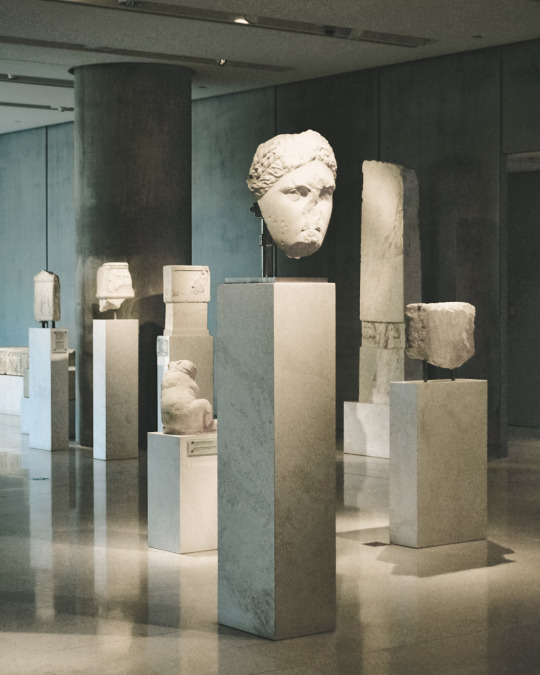
Head of a statue of Artemis Brauronia.
Artist: Praxiteles
Period: Classical Period, around 330 BC
Location: The Acropolis Museum
It was found in 1839 in the area of the Sanctuary of Artemis Brauronia. The head comes from a larger-than-life, statue which most probably depicted the goddess seated. Her hair is gathered at the sides in two long braids that cross each other on top of her head, while a third lies along her central parting. This was a hairstyle common among young children; and suitable for a goddess who associated with them.
#sculpture#statue#artemis#athens#art#classic period#classic#ancient greece#acropolis#museum#art aesthetic#art history#greek art#ancient art#praxiteles#classic art#museum aesthetic#classic era#design#original photography
160 notes
·
View notes
Text
Cheesy Holiday Card Masterpost
I've officially done a full year of those, and since a lot of those festivals will not be relevant to me due to my calendar change, I'm not sure I will be making a set of new ones. If I don't forget, I will probably be reblogging them when the timing is right. However, should anyone want to use them, here's the compilation.
Rural Dionysia + x x
Haloa
Lenaia
Theogamia
Anthesteria
City Dionysia
Delphinia
Mounychia + Brauronia
Olympieia
Thargelia
Bendideia
Plynteria
Skirophoria
Dipolieia/Buphonia
Aphrodisia
Kronia
Panathanaea
Oschophoria + Pyanopsia
Thesmophoria
Chalkeia
67 notes
·
View notes
Text
Artemis [Greek, Olympian]
A page from my grimoire.
Goddess of: the Wild Mountains, the Crescent Moon, Girls, Childbirth & Midwifery, Weaving, & the Hunt.
Zodiac sign: Taurus; her birthday is May 6th
Planet: The moon, specifically the crescent moon
Lineage: Daughter of Zeus & Leto & sister of Apollo.
Primary cult centres: Brauron, Delos, Ephesos, & Sparta
Artemis is one of the most ancient deities in the Greek Olympian pantheon. Her name is of an unknown etymology & her origin rests in earlier, pre-Greek mythology.
Artemis was the Goddess who looked after young girls. The Arkteia, young girls who imitate she-bears, are protected by Artemis and eventually offer their childhood to her when they move into motherhood.
Artemis is the lion among women. She can spare their lives in childbirth, or she could take it away. The clothes of women who died in childbirth were left as offerings, much like the hunter would leave a pelt for the Goddess when he had a successful hunt. Likewise, when women had successful childbirth without much pain, they would consider this the work of Artemis & leave blankets for the Goddess. She assisted her mother, Leto, painlessly birth Apollo, Artemis’s twin brother.
Artemis is a virgin & is the only Greek Goddess to wear a short tunic, symbolic of her perpetual maidenhood & almost boyishness. However, she is a virgin by choice - representative of her fierce independence & autonomy. In fact, some say Artemis was the only Goddess to never be kidnapped or raped.
She has 20 Amnisides Nymphs as her handmaidens & 60 daughters of Okeanos, all aged 9 in her choir. She chose these as part of 12 wishes granted to her by her father. All of her companions remained virgins.
Artemis had various men interested in her & this never worked out well for the men. The river god Alpheus, Bouphagos, Siproites, Actaeon, Orion, &The Aloadaes are among the men that have loved or wanted her. These men often threatened her with rape or kidnapping. However, she was afraid of none of them & usually killed them, had them killed by animals, or turned them into animals. Sometimes it was some combination of the three.
Artemis can teach us wildness, independence, and a love of nature. She protects women, children, and anyone who exhibits exceptional self-sufficiency or who defies cultural gender roles. As a goddess of transitions, she helps us pass from one state to another. As a bringer of light, she can illuminate our lives and help us find our way.
In ancient Greece, cities prayed to Artemis before battle when the situation was a matter of life and death. When the options were to be victorious or be destroyed, they prayed to Artemis for survival. When they won, they would sacrifice in excess to her. Artemis can help us face whatever life throws at us. She teaches us how to adapt, survive, and never just be the sum of others' expectations.
Festivals & Worship
The 6th day of each month is sacred to Artemis.
Artemisia: Modern festival of Artemis where anything goes, celebrating freedom & modern inspiration. Celebrated on June 6th.
Elaphebolia: festival held in Athens & Phocis during Elaphenolion [March-April]. Modern Hellenistic practitioners observe Elaphebolia as a holiday which falls on the sixth day of that month. [March 1st in 2020]. Cakes made from flour, honey, & sesame in the shape of stages were offered to the goddess.
Mounikhia: 16th of the month of Mounichion of the Athenian calendar. Was created to commemorate the victory of the Greek fleet over the Persians at Salamis. Cakes w/ candles were offered to the goddess & young girls dressed up as bears.
Kharisteria: Festival of Artemis at Athens to thank her for their survival of the Persian assault at Marathon. Celebrated on 6 Boedromion [September/October].
Mounykhia: 16 Mounkyhion [April/May]. Festival to Artemis as a light bringer.
Brauronia: Festival to Artemis at Brauron & an initiation festival for young girls. At this festival, girls & maidens dance in their bear masks w/ phallus' strapped to them. The dance was slow & solemn as it was meant to imitate bears. Baskets of figs were also carried. The earliest participants actually wore bear skins; however, they were switched to Krokoton dresses. The dresses were short, saffron-yellow chiton, at the end of the festival they shed their dresses to symbolize maturation. Offerings found here are many, but include spindles, spindle whorls, loom weights, epinetra, textiles, & garments. Celebrated every 4 years.
Thargelia 6-7: May 6, which is the birthday of Artemis & Apollo.
Symbols
All animals, as she is the mother of all animals. Particularly, deer/stag, bear, goat, boar, buteo hawk, dog, horse, fresh water fish & ground dwelling birds.
Bow, arrows, & torch.
The crescent moon.
Colors: silver, white, red, green, turquiose
Offerings
Cypress, asphodel, amaranth, palm tree, mug wort, birch, wildflowers, female goat [drawing/toy/etc; I don’t really condone giving an actual goat, lol], toys from girls before their wedding, clothing [from women], garlands, statuettes of soldiers, clay masks [bear, rites of passage], moonstone, frankincense, fruit, music & dance, work & tasks, honey, port, incense [woodsy] game meat, & pelts.
Crystals
Moonstone, pearl, clear quartz, silver, turquoise, emerald & diamond.
How to Worship
Offerings, caring for the natural world & animals.
Support women's and all gender equality, supporting LGBTQ+, and trans rights and equality.
Spending time in nature.
Show gratitude to the natural world & its gifts, including using natural resources in witchcraft if you practice or any other creative hobby you may have.
Work, any kind of work. Dedicate it to Artemis. Create her things to offer her.
Knitting, sewing, crocheting, etc. Artemis as one of the goddesses of weaving so you can dedicate anything you make to her. Likewise, you can use knot magic with her.
Epithets
Agreia/ Agrotera – Of the Wild, Huntress
Brauronia – Of Brauron, Caretaker of Girls
Delia – Of Delos
Hegemone – Leader, Ruler
Karytis – Of the Walnut Tree
Keladeine – Noisy or Sounding
Kynthia – Of Kynthos
Leukophryne – White Brow
Limenia – Protector of Harbors
Limnatis – Of the Marsh
Lokheia – Protector of Women in Childbirth
Mounykhia – From Mounykhia
Parthenos – Virgin
Phoebe – Light Bringing
Phosphoros – Bringing Light, Shinning
Potnia Theron – Mistress of Animals
Soteira – Savior
Sources
“The Myth of the Goddess: Evolution of an Image” Anne Baring and Jules Cashford
“The Oxford Classic Dictionary” Simon Hornblower
“Encyclopedia of Greek and Roman Mythology“ Lucas Roman
“Artemis” Theoi.com
“Artemis” Wikipedia
“Artemis” Britannica
#hellenism#artemis#hellenic#artemis devotion#dieties#witchcraft#goddess#worship#grimoirepage#melitta
486 notes
·
View notes
Text

Artemisa Brauronia Una familia de fieles acaba de llegar al santuario para sacrificar una cabra a Artemisa. La diosa con su venado predilecto, está sentada sobre una roca ataviada con un largo quitón y sandalias. Una sirvienta lleva una caja sobre su cabeza. Relieve de mármol 350 a.C.
5 notes
·
View notes